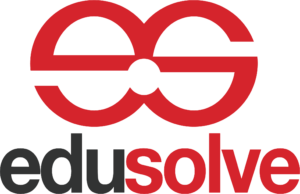Faculty learning communities (FLC) as an approach to improving pedagogy have their roots in 1979 when the first FLC was launched at Miami University by Dr. Milton D. Cox. FLCs have since expanded to include making teaching and learning visible efforts, like those at the University Colorado, Boulder, to professional learning communities, communities of practice, to its natural outgrowth as professional organizational development programs.
FLCs provide faculty with the chance to work in a trans-disciplinary fashion on matters of importance to a cohort or a particular topic for the cohort to work on. Whether part of teaching and learning centers, centers of teaching excellence or faculty cohort pedagogy fellowships, the number of FLC-related activities on campuses in the US and globally is a testament to the benefit of the instruction, faculty and, ultimately, students.
While there is a distinction between terms like faculty learning communities, professional learning communities and communities of practice, for purposes of this article, there are enough fundamental similarities between the three to consider them all to fall under the umbrella of “learning communities”: they all understand that learning and instruction are socially situated, and both contribute to improved teaching and learning.
Encouraging participation in faculty learning communities
The institution, of course, is essential in creating and sustaining an FLC effort. Many institutions choose to locate their established FLC activities in the provost’s office and offer faculty participation through application. In contrast, others prefer to house the FLC efforts in centers for teaching excellence—suggesting a high level of commitment in the university hierarchy.
The support for FLCs can be demonstrated through the means available to the institution, such as class release, stipend for participation and showcasing and rewarding faculty projects. These efforts could help to encourage hesitant faculty to engage FLCs. Instead of potentially “telling faculty that what they have been doing for the past five, 10,or even 30 years may not be the most effective approach—especially for today’s students” (Brownwell & Tanner, 2017), participation in an FLC can be framed as an opportunity for focused work on pedagogy and recognition of that work.
Creating participation: New faculty
The traditional model for FLCs concentrates efforts on teaching or a particular organizational topic; more recent models focus on widening the scope of the FLC to concentrate on new faculty hires to orient new faculty to the changes in teaching and professional expectations. As such, FLCs become a tool for retention.
New faculty hires can benefit from FLCs that are designed for new hires. Beyond the typical institutional orientation, new faculty FLCs can be designed for eight areas of importance in higher education (Beane-Katner, 2011, p.93) and help to enculturation the new faculty:
- Solid grounding in their fields, as well as the ability to address interdisciplinary questions;
- Knowledge about the learning process and a wide range of teaching strategies;
- Ability to incorporate technology in their pedagogy;
- Understanding of the concepts of engagement and service in their institution and how scholarship can link to service;
- The capability to communicate effectively with various audiences on and off campus;
- Experience working with diverse groups;
- Appreciation of institutional citizenship, and
- Understanding and appreciation of the core purposes and values of higher education.
This eight-step orientation process involves cognitive changes and emotional and social dimensions, thereby fostering a comprehensive transformation. The process underscores the role of experiential activities and contextual awareness in facilitating this learning process, promoting a deeper understanding of personal and situational influences on beliefs and actions. Future research should focus on the subjective aspects of transformative learning, such as the impact of relationships and emotions on critical reflection and learning outcomes.
These areas of importance are well-suited to a learning community approach as faculty development. They could allow institutions to move beyond the traditional new faculty orientation model (93).
Indeed, the enculturation of new faculty shouldn’t be limited to tenure-line hires, especially in the current climate of disappearing tenure lines and increasing contingent faculty. An FLC approach that mixes more senior faculty with contingent faculty would help both groups: senior faculty can better understand opportunities for teaching or topic-based cohort activities by including the perspectives and approaches of contingent faculty to develop mutually beneficial projects on teaching research. Especially since contingent faculty are often juggling multiple courses at multiple institutions, an FLC could help to foster belonging (Ahlers, et.al)
The future of FLCs will continue to expand beyond encouraging faculty pedagogy and scholarship. Positioning faculty to engage opportunities for interdisciplinary scholarship and support through FLCs will help move both engagement and application.

